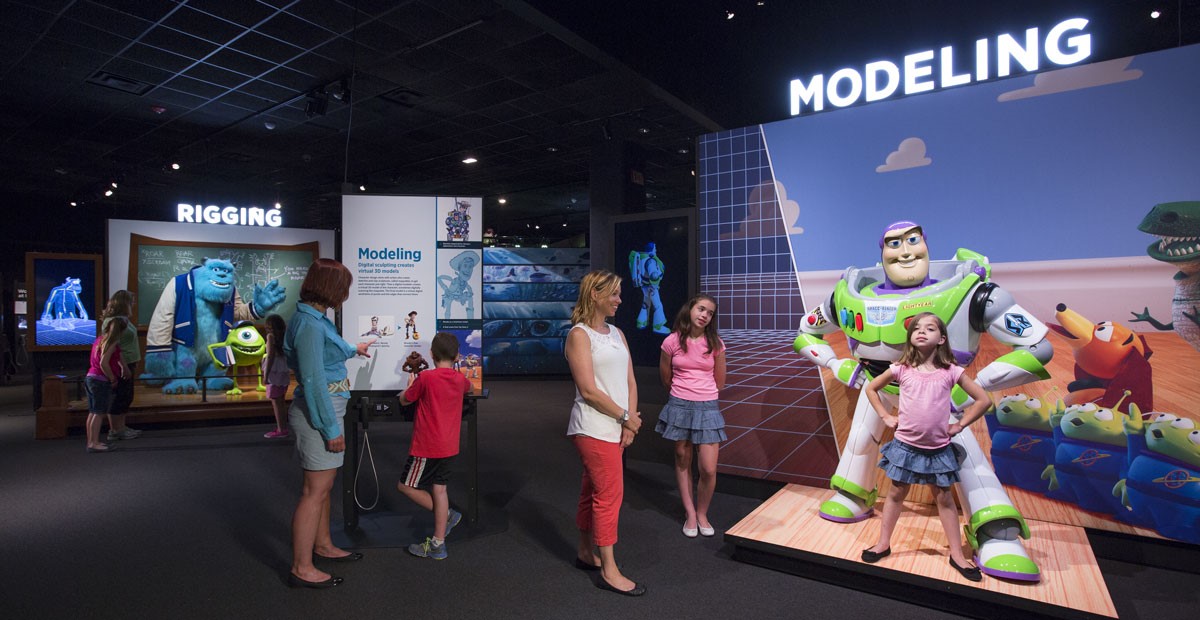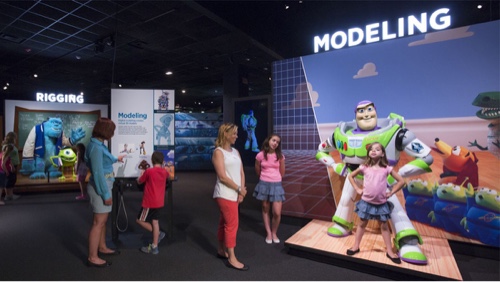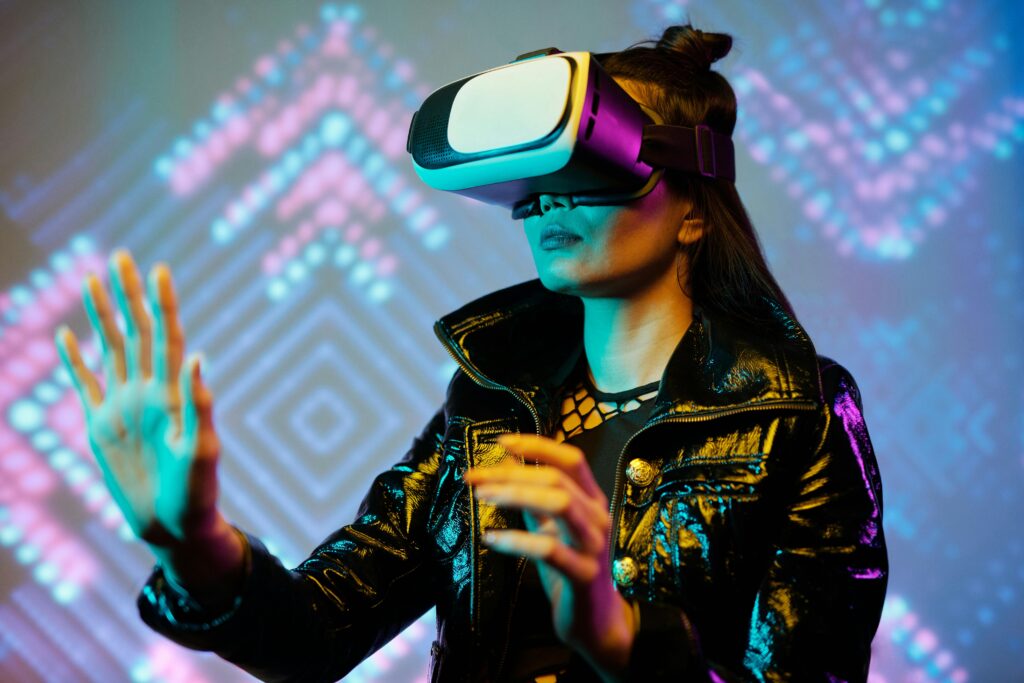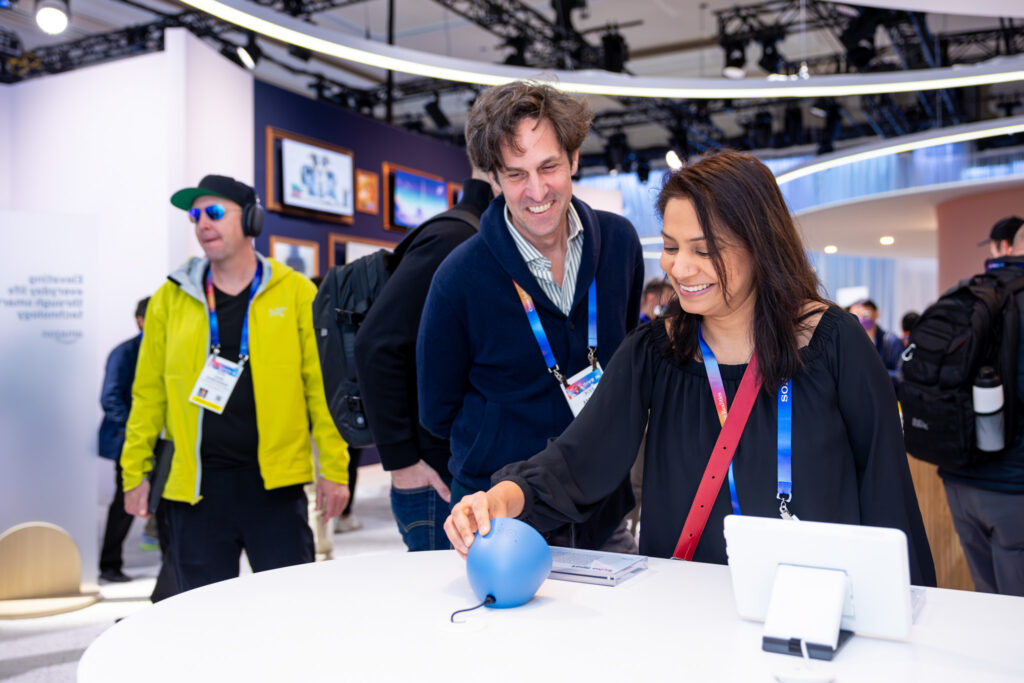
The Exhibit Science Behind “The Science Behind Pixar” Exhibition
By Kevin Padden
My recent trip to Southern California coincided with the heaviest rainstorms the area had witnessed in over 20 years.
Not just heavy downpour rains. Not just “now we’ll see if your roof really leaks” rains. But rockslide, mudslide, “sinkhole swallows a Mercedes and a Honda CRV”** rains. Needless to say, most of the usual outdoor activities (hikes, bikes, the beach …) were off the agenda that weekend.
So we took refuge in a great (indoor) exhibition at the California Science Museum; “The Science Behind Pixar.”
Already famous not just for their unprecedented string of groundbreaking hit movies and their overall approach to story, Pixar has a well-deserved pedigree in the arts, but this exhibition focused on the intersection of art and technology.
And with their approach to the exhibit, they also demonstrated mastery of the “rule book” for audience engagement.
Here are a few examples of their exhibition “best practices”:
TELL THEM WHAT YOU ARE GOING TO TELL THEM
“Tell them what you are going to tell them. Tell them. Tell them what you told them.”
This is a basic tenet that comes from public speaking, and from classroom teaching. It also applies to self-guided explorations (and what better way to describe most exhibit experiences?).
The idea is to focus the attendees on what they are about to experience. The Pixar exhibit experience began with a short orientation video (this process also helped meter people into the space.) The video introduced the central idea; that creating a Pixar character or scene can be broken into a number of interconnected processes.
PROVIDE A MAP
By a map, I am really referring to “wayfinding.” How does an attendee know where to go, what to do?
At The Science Behind Pixar, as soon as visitors leave the orientation video theater, they enter the larger exhibit hall. But rather than simply being set free in an open space with no guidance, the first thing visitors encounter is a graphical display that enumerates the various processes that make up a fully-realized Pixar character or experience (remember, that is the organizing idea of this exhibit).
Processes presented to the visitors include:
- Story & Art
- Modeling
- Rigging
- Surfaces
- Sets & Cameras
- Animation
- Simulation
- Lighting
- Rendering
Then as visitors begin to explore the space, they see overhead signage indicating the place where each one of these processes are explored. So you can go to Modeling, to Surfaces, to Lighting, in any order … but now you know how each one connects to the whole.
DOING IS BETTER THAN WATCHING
In the hierarchy of audience engagement and message retention, seeing is better than hearing … and doing is better than seeing.
The Science of Pixar has a number of stations where a visitor can look at video content; whether an example of one of the processes being employed in the Pixar studios and labs, or one in a series of interviews with artists and technicians who work in the creation of Pixar characters and movies. Some play in a loop, but most are triggered by a viewer.
But the standout experiences are a series of interactive computer engagements. In each content area (Rigging, Articulation, Sets & Cameras …), there is a hands-on activity that allows attendees to simulate some “real-life” problem-solving opportunity.
Visitors (of all ages) line up for the opportunities to try these simulations.
LET THE AUDIENCE WORK IT OUT
Each of these simulations creates a puzzle – a simple premise with a variety of solutions. See how you can move a figure in different styles. Adjust the lighting in this room. Match the surface of this object.
The computer simulations feature simple buttons, sliders, touch screen menus to control relevant variables. They also provide straightforward labels and rules. And they let people explore solutions.
Activities are neither timed nor scored … there is no focus on getting the “right” solution (although hints are provided). And there are no negative consequences for “wrong answers.”
Attendees ranging from children to skilled designers sit next to each other at these stations. Some quickly move a few controls around and “get the idea” before moving on, while others explore the topics with depth and subtlety, lingering for an extended time. Both groups are engaged when they begin and satisfied when they finish.
CROWDS BEGET CROWDS
Because this exhibition is in demand, you need timed tickets for admission to The Science Behind Pixar. But even though crowds are metered into the exhibition area, there are still people busily engaged at most interactive areas.
And wherever there are interactives in use, there are also more people looking over the shoulders of the users. Whether queuing up for the next open spot or trying to understand the operations of a simulation (or doing both at the same time), attendees gravitate to the areas where people are doing something, curious about “what’s the idea over here.”
The exhibition did a good job of anticipating and satisfying that curiously by using large screen displays, and even the occasional second screen, to show what was going on in such a way that each small group of viewers could follow the action before deciding to participate (or not).
TELL THEM WHAT YOU TOLD THEM
This is the flip side of the first “best practice,” and again, a basic rule of the classroom. Provide some sort of message summary or a callback to the message you introduced at the beginning of the engagement.

At The Science Behind Pixar, there is a final stop in the exhibit space (before the Gift Shop, of course!) that provides a great example of this principle at work. In this area visitors stand surrounded by monitors, each of which shows a piece of a scene that reiterated one of the steps in the process (Rigging, Surfaces, Lighting, Rendering …). Standing in that one spot, one connects all of the messages and activities into one package, taking it all in at once.
There is no question that most experiential designers would envy the opportunity to work on such a creative enterprise, with access to the art, technology and even the audience-friendly content that was on display in The Science Behind Pixar. But part of their success is also due to an understanding – and a willingness to put into practice – of the science of exhibit engagement.
That science combines an understanding of crowds and of individuals. It is not technological, nor does it cost money to consider or implement. Even with more modest engagement opportunities, the organizing principles above will help you tell a story that sticks at your next special event or activation, or in a single exhibit experience.
**NOTE – Check out the sinkhole that swallowed two cars. It was near where I stayed, in Studio City.






